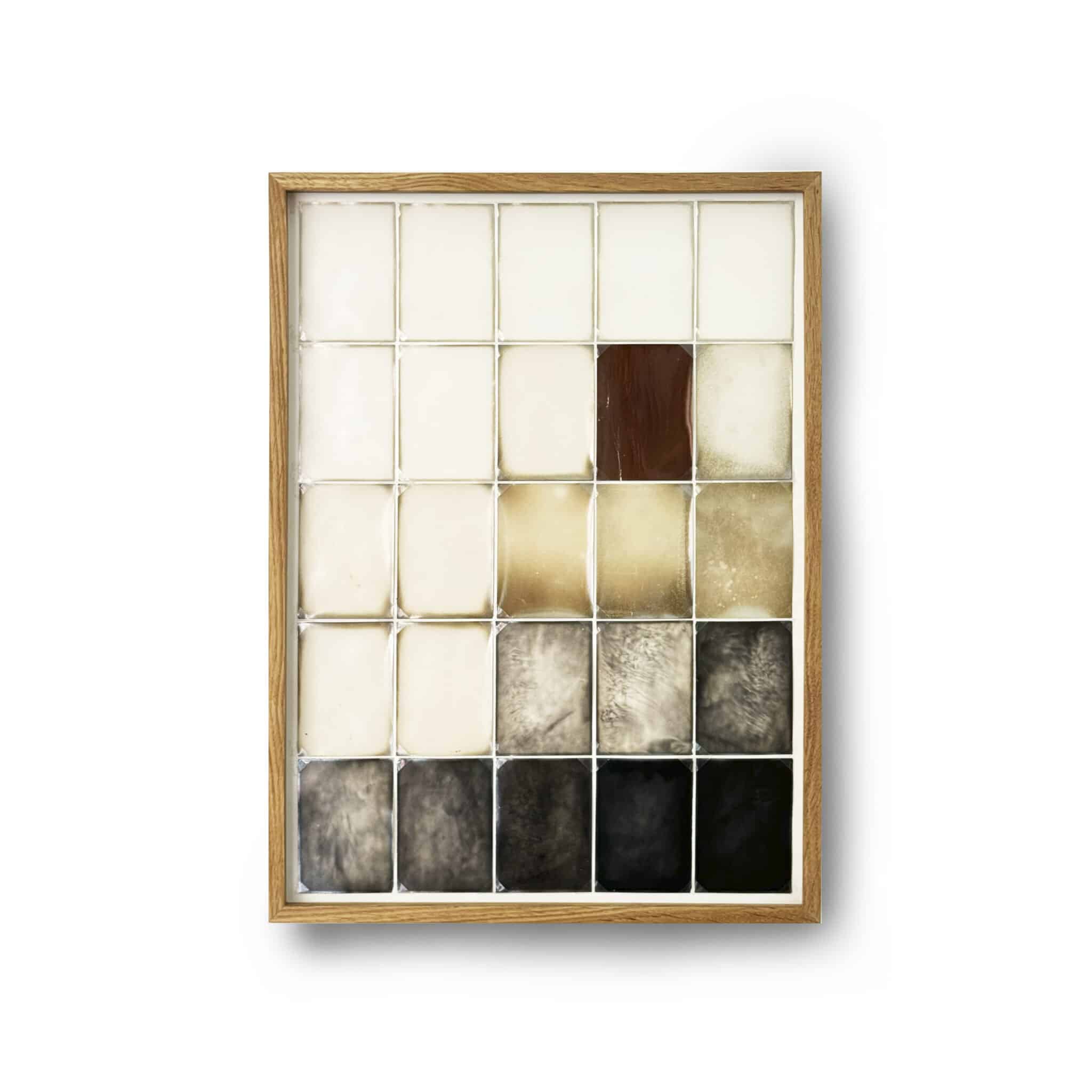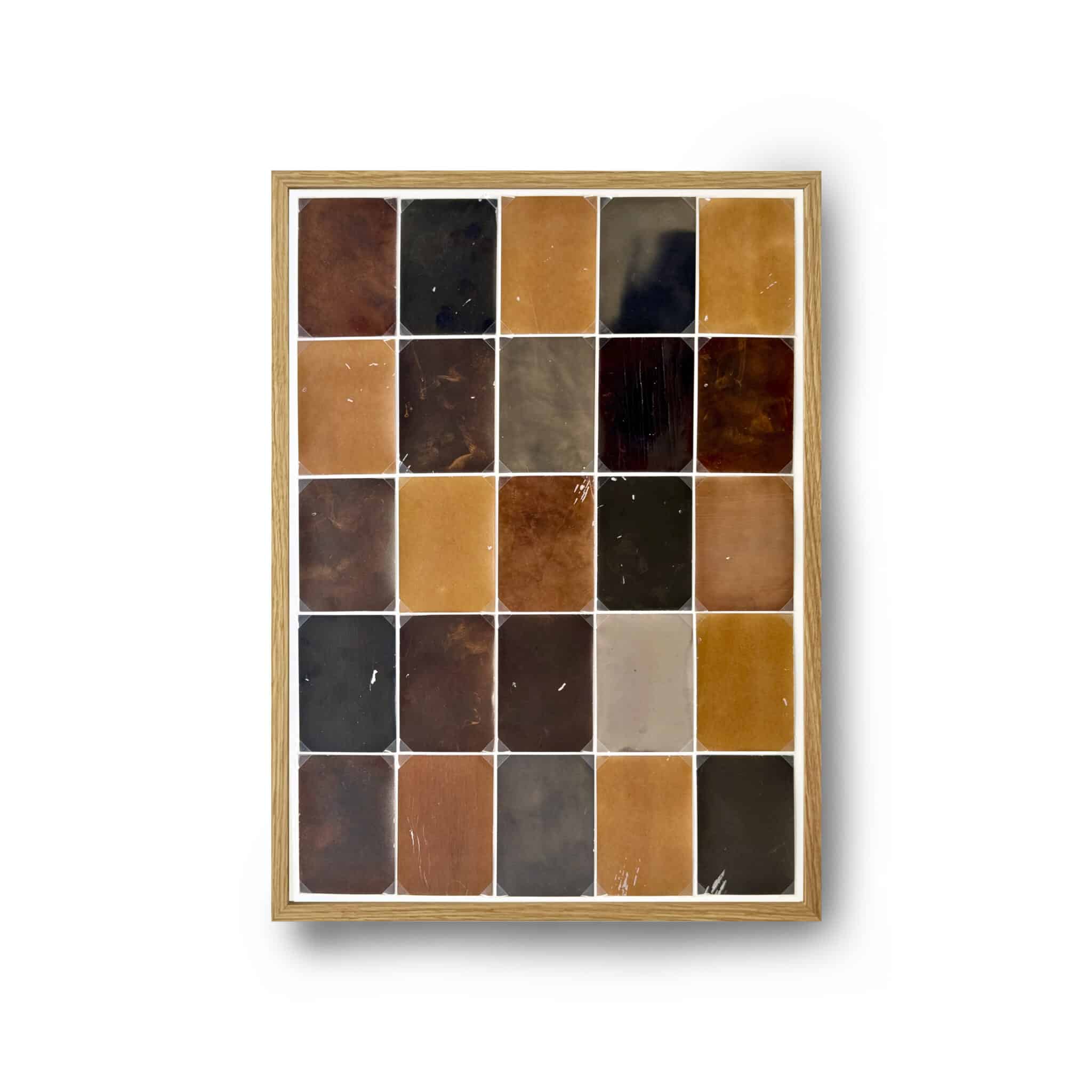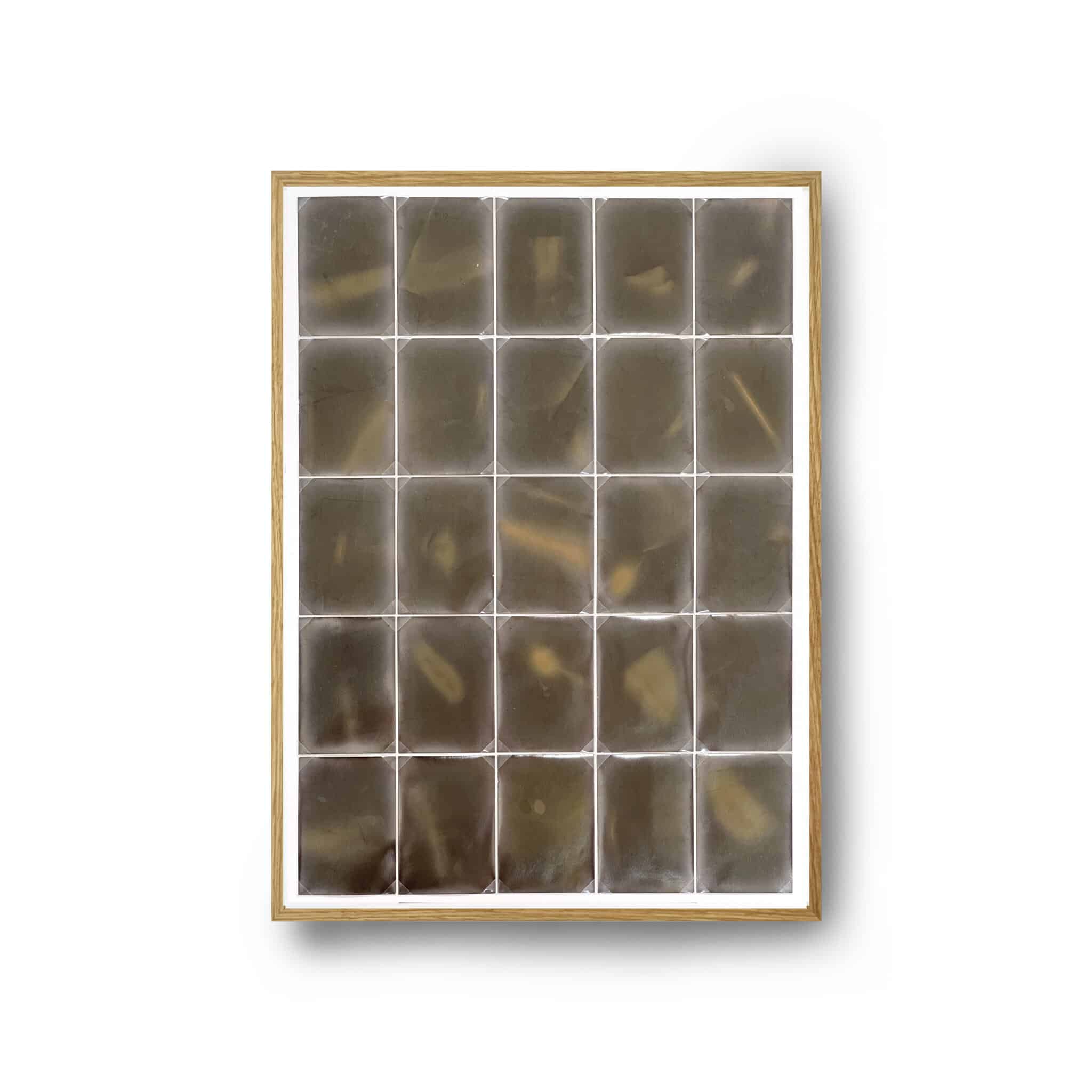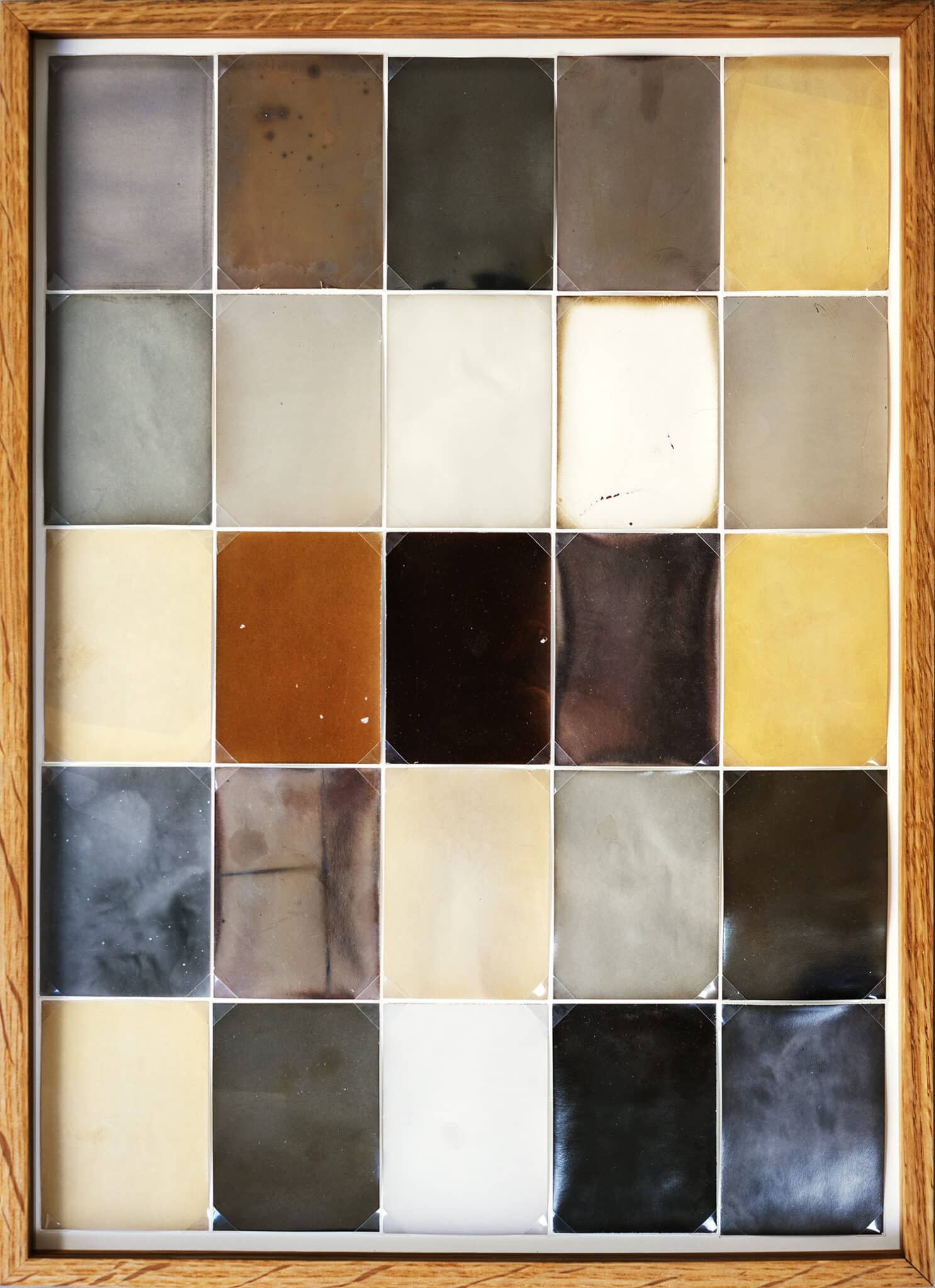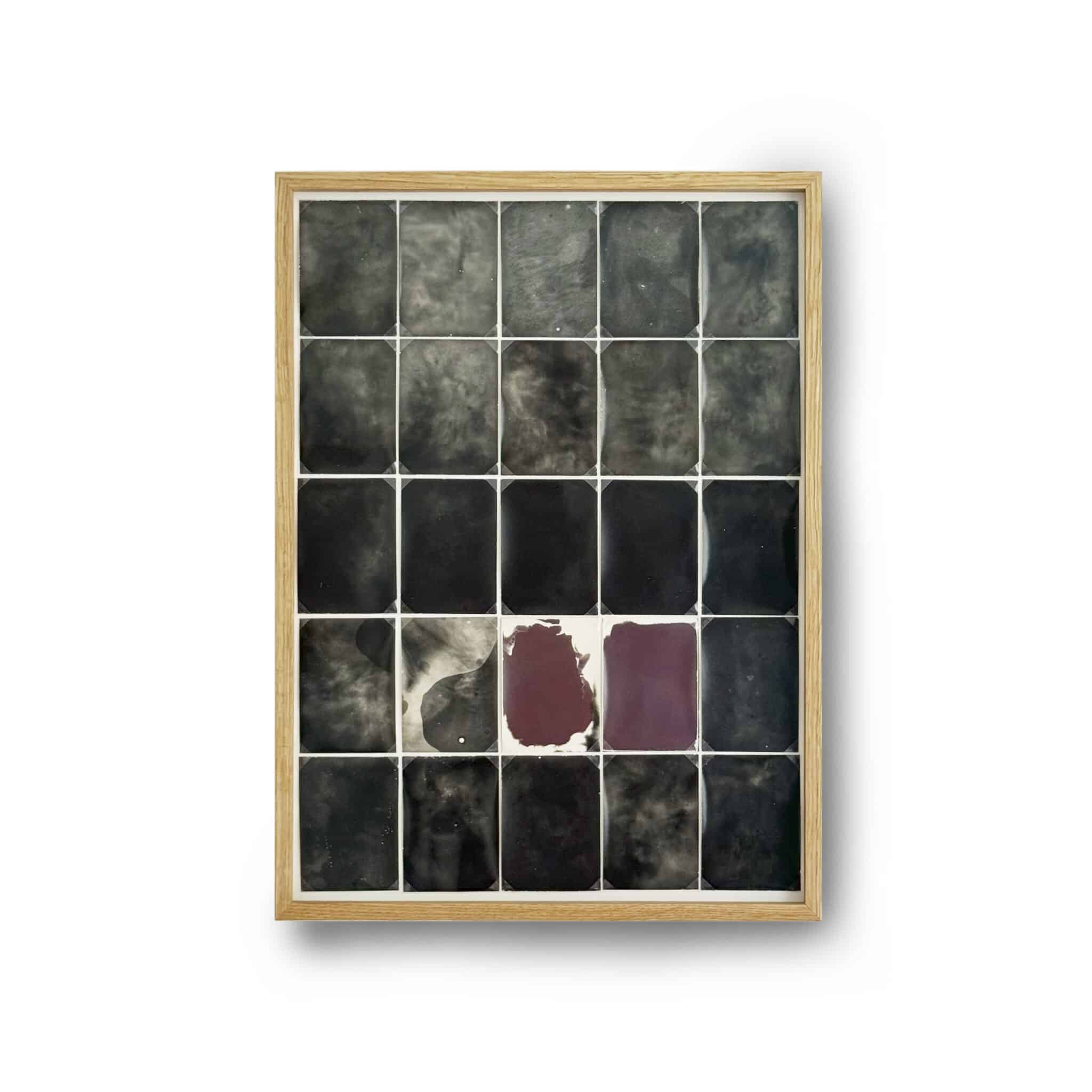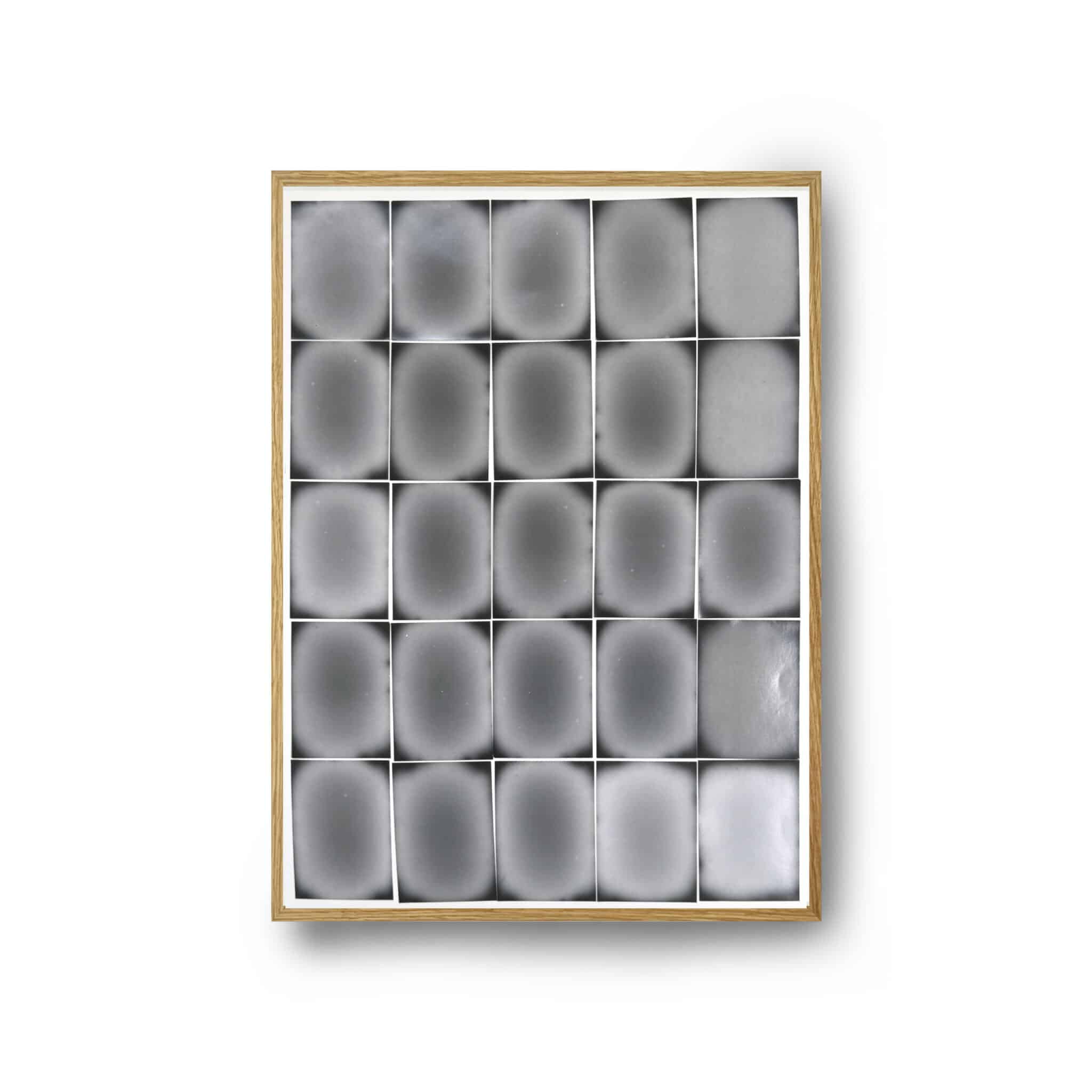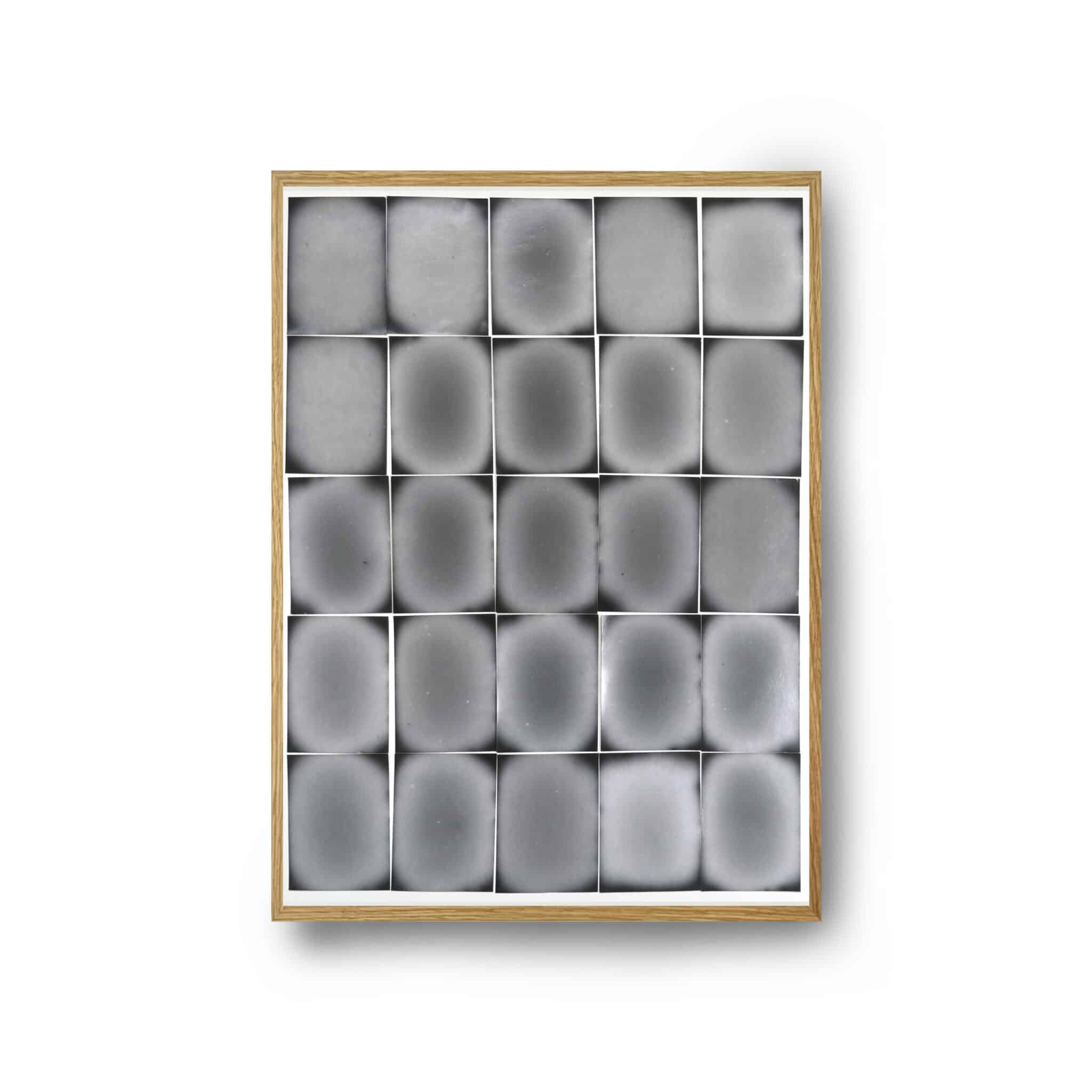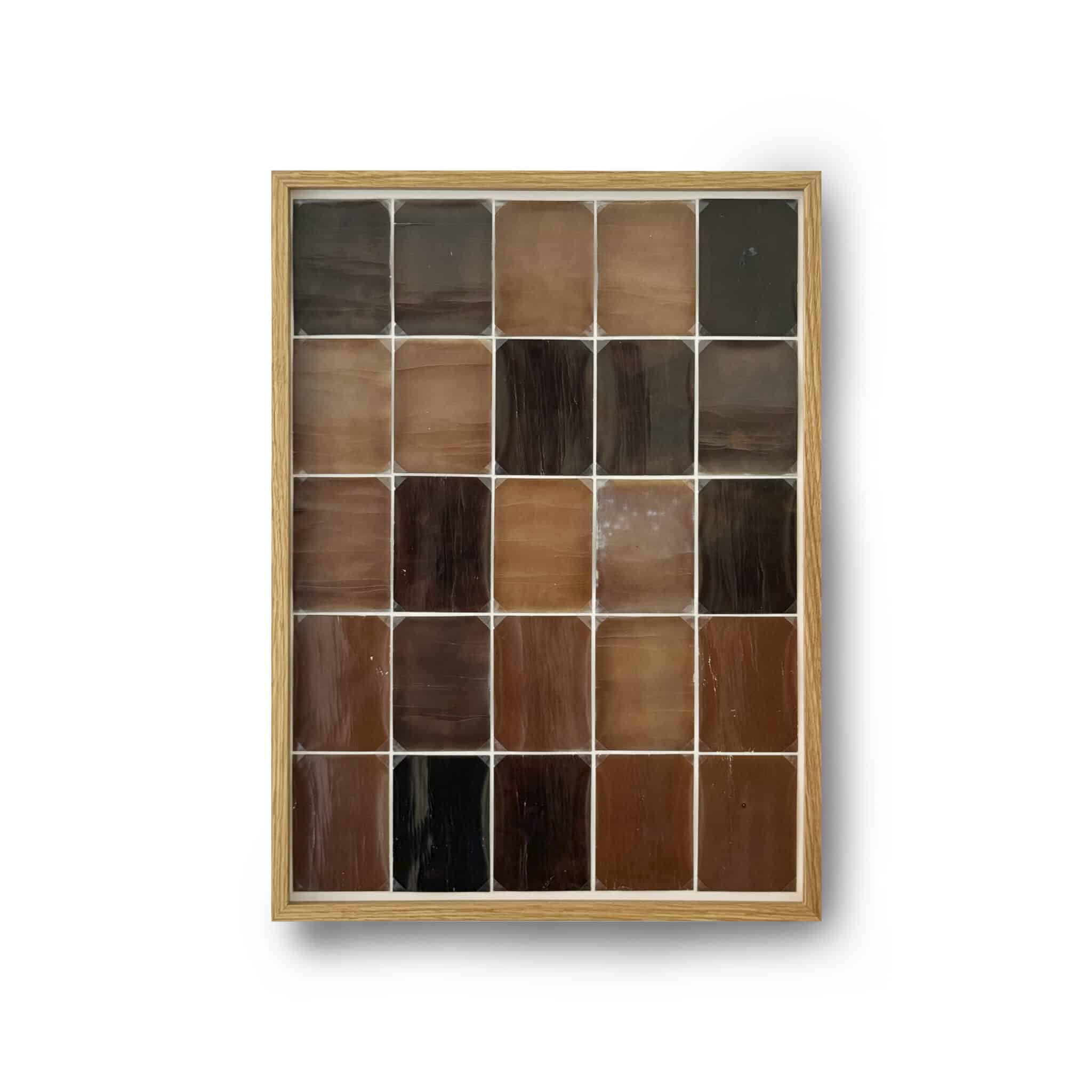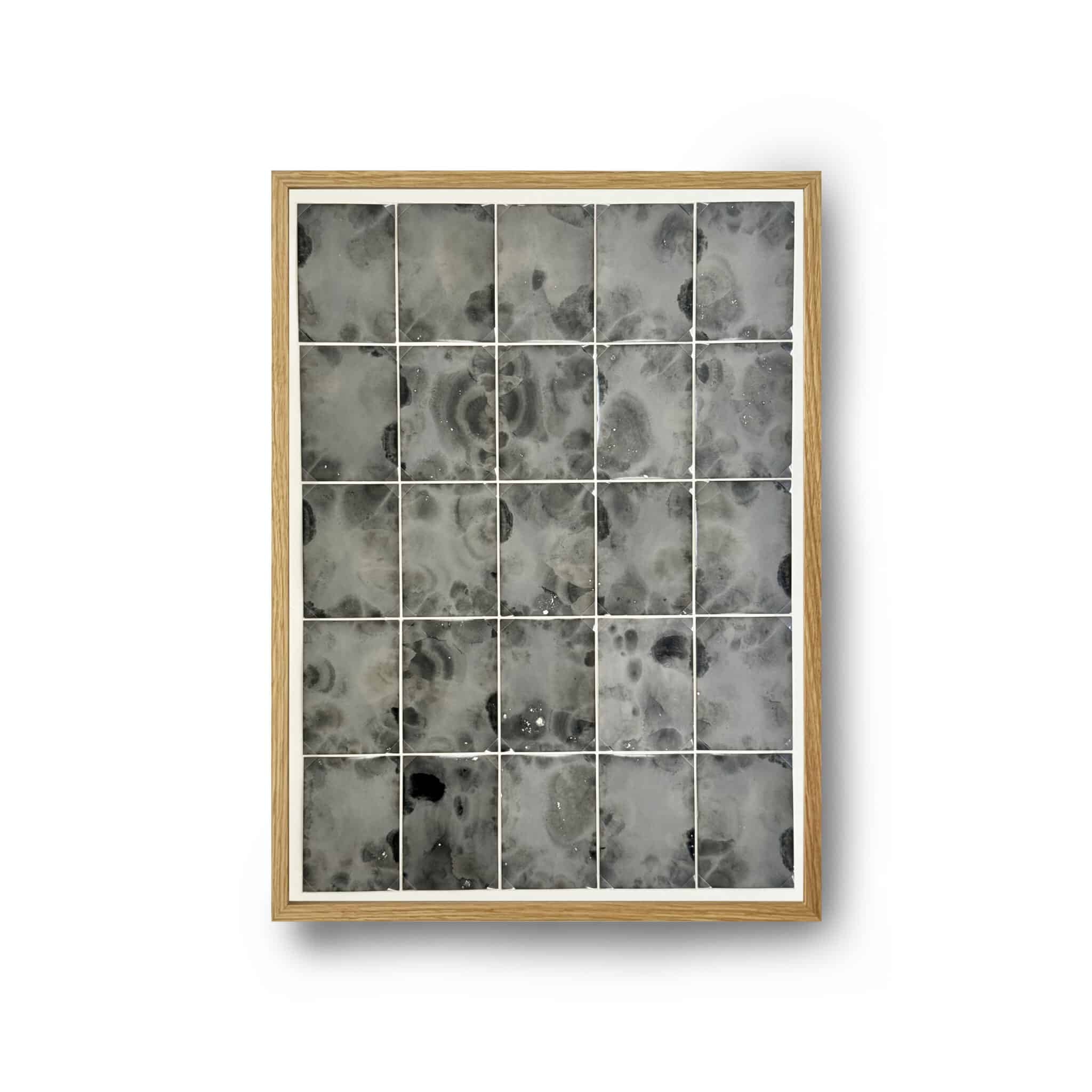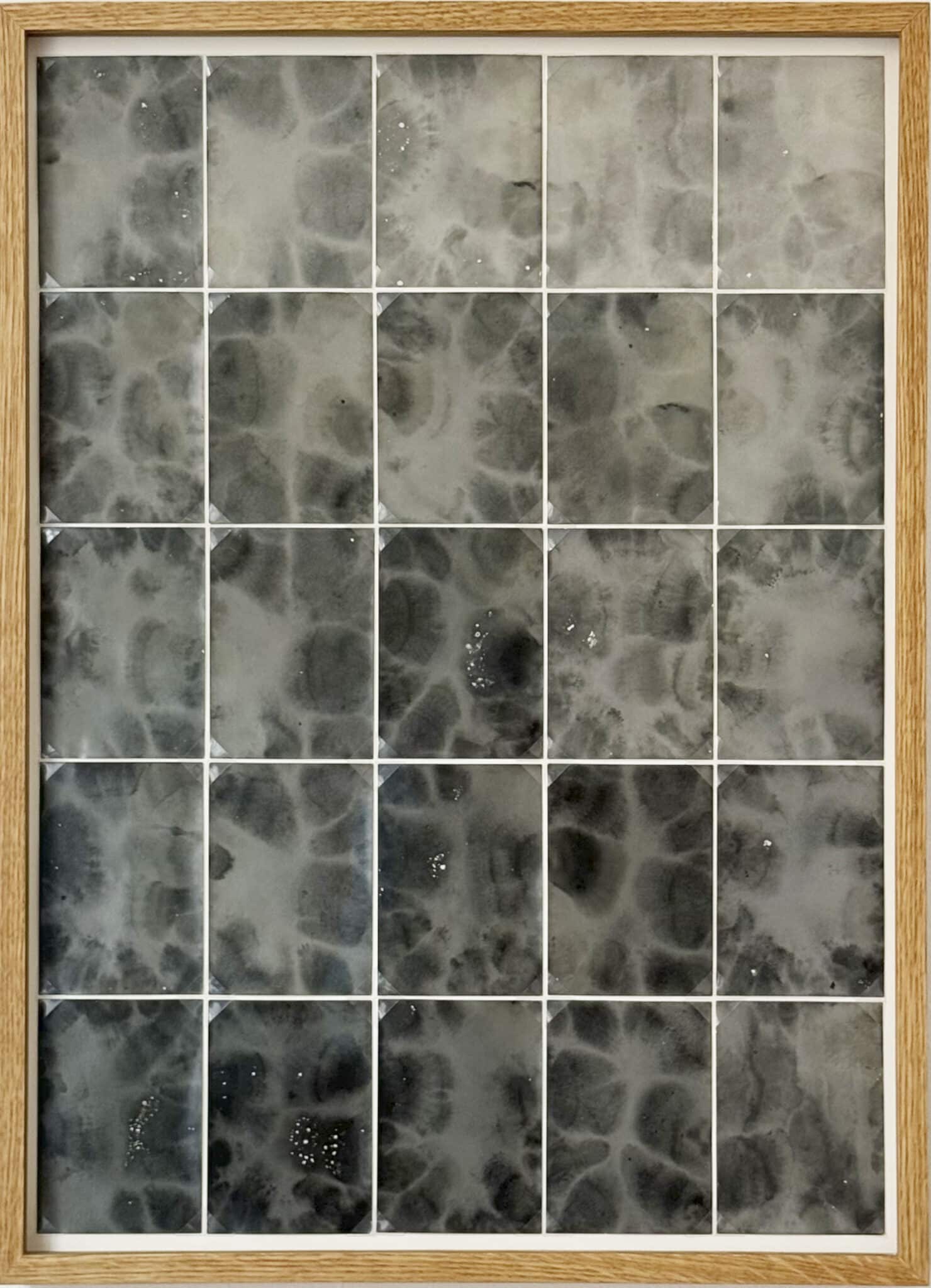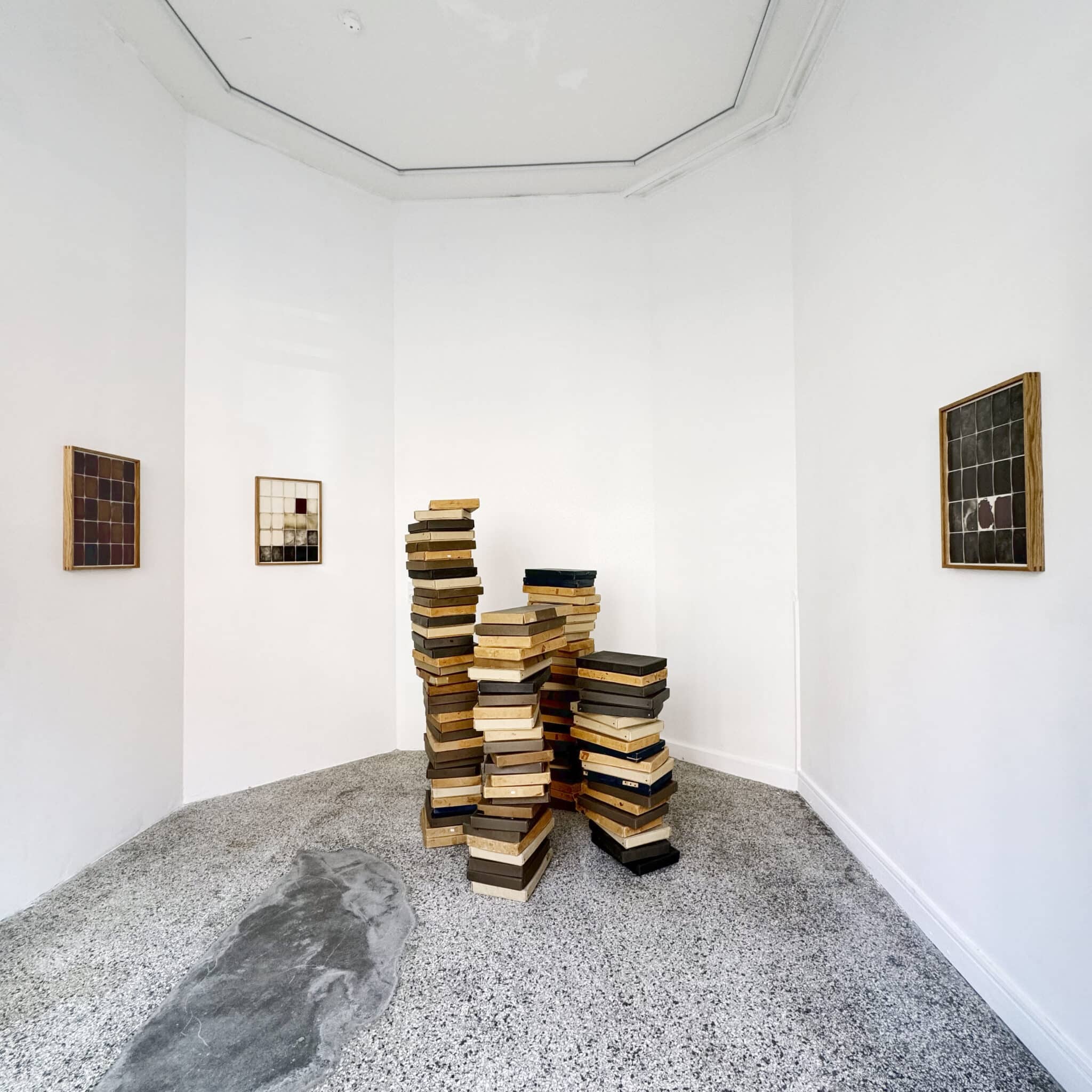BOXES AND PAPER
- type:
Work - date:
18/04/24 - event:
- place:
Boxes & Paper
The work Boxes & Paper, by the Danish visual artist Nicolai Howalt.
The first is a framed compilation of over 100 motifless, aged analogue photo papers. The second is 100 boxes from the legendary box factory ELVO, which was founded in 1923 in Copenhagen.
The analogue photographic papers, which in the exhibition are gathered in a single frame, have not been exposed to a photographic negative, but developed as they are. It is developed photo paper.
Due to the varying age, quality, storage and patination of the papers, each paper reveals a unique tonality and unique flaws when developed. So it is the papers themselves and the ravages of time that create the motifs, not the photographer.
It is in the transience of the material that the images arise, and together they form a visual archive of the material’s own journey through time.
Some appear abstract in changing, delicate tonalities, some appear colorful and others black and white with small flaws that form motifs that cast the mind towards galaxies, celestial bodies or nebulae and the both all-encompassing and changing infinity of the universe.
The exhibition’s second work is located in the room in front of the large picture work. Here, collected historical cardboard boxes rise in towers of different heights as tangible, installation and sculptural counterweights to the fleeting imagery of the photo paperers.
The boxes also show the signs of time. Glue residues from torn pieces of tape, splash marks, stamps and penciled index numbers are a burden of knowledge about each box’s own history. In this way, it becomes clear that the boxes have their own history, but they reveal nothing about their former function, or whether they are empty in the exhibition or not.
Just as boxes and cases are used to store, preserve and organize, photography is associated with remembrance, preservation and documentation. Both act as containers for time, memory and moments: one for tangible artifacts and the other for intangible visual memories.
In the exhibition, however, both photographs and boxes only reveal their own complex and material connection with time. The human stories, the lived lives of people that have surrounded them for decades, emerge only as soft echoes in the small marks and flaws of the Stoic works.
The exhibition invites to reflect on the boundaries between the visible and the invisible, between the material and the metaphysical, the concrete and the remembered. The materials are not only media for the past, but themselves active participants in a narrative about the eternal transformation of time.
